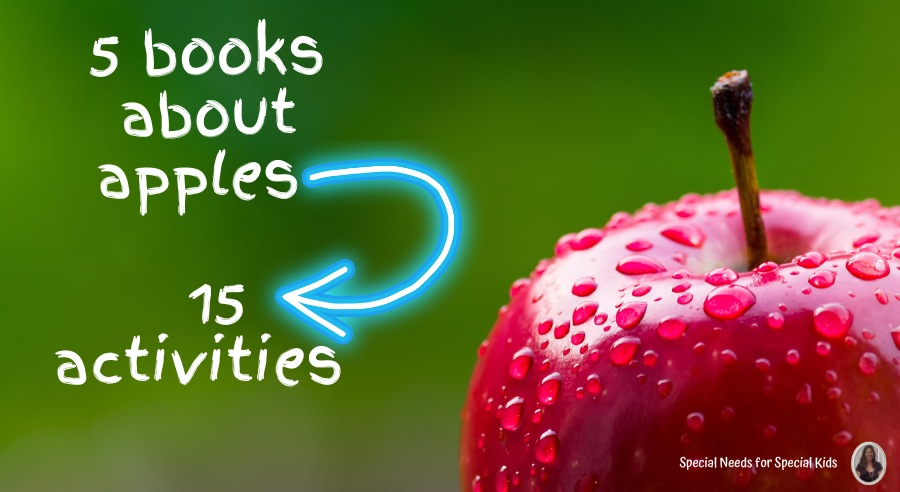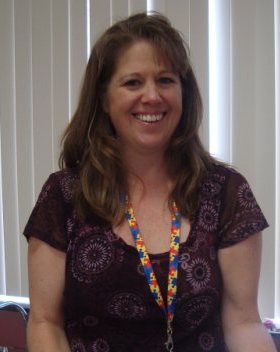Here are 5 books on apples your students will love plus 3 activities you can do with each book. And, they are all geared toward students in a special education setting.
I love using picture books to teach about other topics. It takes a lot of the work off my plate and gives me a great foundation to build activities. Here is a quick summary of 5 great books on apples and some activities you can incorporate into your lesson plans, even into your science ones.
1. Apples by Gail Gibbons
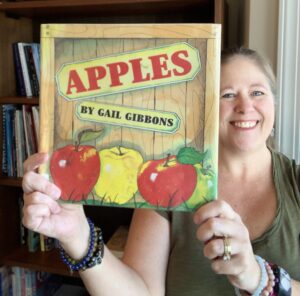
Apples is a great book to start with. Students will learn all about the different parts of an apple as well as the many varieties that are available. Make sure to take a trip to your local orchard or grocery store to pick up as many different varieties that you can find to use as visuals when reading this classic.
Here are some activities you can add to your plans for this book.
- Circle map on apples. I like to start off with a circle map that is fairly general about a topic. You can provide students with pictures to put in the circle map or allow them to fill in the circle map with as many details as they can think of about apples. If using pictures, you can make it more challenging by mixing in some wrong answers students will have to set aside. To read more about using circle maps, visit this blog post 10 ways to use a single circle map.
- Label the parts of an apple. Luckily, apples are pretty easy to draw. I am a terrible artist, but even I can quickly draw an apple on the board and have students point to the various parts like a stem, skin, seeds, and flesh. In this book, you will also learn about carpels!! This was new to me. Make sure to use some real apples as well for this activity. And, ask students how the parts differ among the different varieties.
- Explore different varieties of apples. This book has some great descriptions of the many different kinds of apples available. Have students compare the varieties you were able to find. Compare the colors, sizes, shapes, and even tastes. Take a class poll as to which one is your favorite.
2. Fall Apples Crisp and Juicy by Martha E.H. Rustad
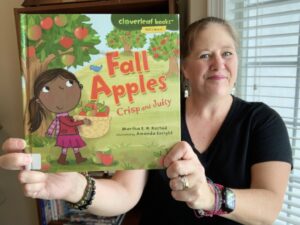
Fall Apples Crisp and Juicy is a great choice when you are talking about how apples taste and grow. This book works really well if you are doing a science unit on apples or plants. The book talks about the sequence of events that turns a seed into an apple tree. Plus there is a great recipe at the end for some apple crisp.
Here are some activities I would recommend for this book:
- Where does it grow? Have students sort different types of fruit depending on it they grow on a tree or a bush/vine. (Hint: I had to look up a few of these myself.)
- For a list of fruits that grow on trees CLICK HERE
- For a list of fruits that grow on bushes CLICK HERE
- For a list of fruits that grow on vines CLICK HERE
- Sequence how an apple grows. Starting from a seed, have students put in order how it grows into a tree and eventually into another apple. The book does a good job of outlining this. You don’t have to include all the steps depending on the learning level of your students.
- Make the apple crisp recipe. At the end of the book is a simple, classroom-friendly recipe for making apple crisp. Pre-measure and label ingredients for students who may need more support. If your students enjoy cooking, be sure to download the free recipe you can find in this blog post, Cooking in the Classroom
3. Apples, Apples Everywhere by Robin Koontz
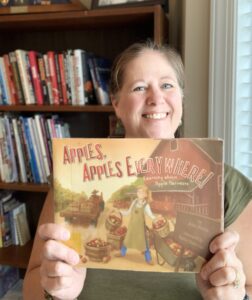
Apples, Apples Everywhere is the book you want to read if you are planning a trip to an apple orchard. And if school funds are low, then consider doing a virtual one!! (check out this one on YouTube, CLICK HERE) There is a lot that goes into harvesting apples and getting them ready for the market. This book will go into all the details in this industry in a kid-friendly way that will get them excited about visiting a local orchard.
Here are some activities your students are sure to love:
- Make a collage. Either before or after your trip to the orchard, make a collage of all the things you think you might see. There are a lot more things than just apples at an apple orchard!!
- Word map. Harvest may be a new word for some of your students. Create a visual map of synonyms for the word harvest as a noun and as a verb.
- Foods with and without apples. Once you have your apples from the orchard, what are some ways you can eat them? Have students sort pictures from magazines (coupons work great as well) of foods that do and do not normally contain apples.
4. Seed by Seed by Esme Raji Codell
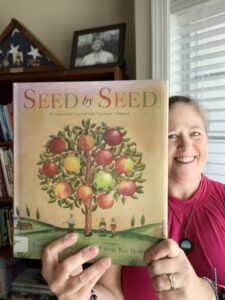
What apple unit would be complete without a story about John “Appleseed” Chapman? Seed by Seed is not only a story about Johnny Appleseed, but about why he was so passionate about planting apple trees and his quest to complete acts of kindness.
Here are some activities you can do with this book:
- What is a legend? The story of John Chapman is part truth and part legend. Have students brainstorm words that describe someone who is a legend. Too hard for your group of kiddos? Then create a classroom collage depicting some of their favorite legends (real or imaginary).
- Taking care of the Earth. Planting apple seeds was one way John Chapman thought he could help the Earth. What was being thrown away as waste at the cider press, he gathered and replanted. Have students sort things that they do each day (or could do) that are good for the Earth.
- Being kind. John Chapman was not only concerned about the Earth, but he was concerned about the people he would meet on his travels. He was known as a kind and generous man. Have students sort actions (that you write on index cards) that are kind and unkind.
5. The Gravity Tree by Anna Crowley Redding
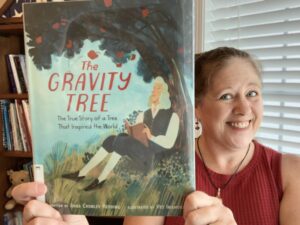
This was probably the MOST interesting book I read about apples and is for all those science teachers out there. The Gravity Tree is the true story about the apple tree that inspired one of the greatest scientists of all time, Isaac Newton. And, even though this is a picture book, it is perfect for your middle and high school students. It is an inspiring book about a very special tree. Even Einstein and Stephen Hawking stood below it for inspiration of their own.
Here are some activities you can do with this book:
- Circle map. Students will learn a lot about the Gravity Tree in this book. Have them create a circle map showing all they have learned. That way, they will be able to retell this story to friends and family.
- Word map. Several times throughout this book, the word extraordinary is used. What does that mean? Have students create a collage or word map showing other things and people they think are extraordinary.
- Writing prompt. Can you imagine what it might have been like to be that tree? To see all the people who came for inspiration and strength? Have students write a story as though they were the Gravity Tree. What and who did they see? If you need help setting up writing prompts for your emerging or non-readers, check out this blog post and download a free writing prompt on apples, Writing Prompts using Pictures.
Well, those are some of my favorite picture books about apples. There are so many out there, and many of the activities above will work with the apple book you currently have in your classroom!
If you would like a complete literacy unit for any of these books, then be sure to click on the titles below and check them out in my store. Each book a week’s worth of activities in a printable and digital format.
